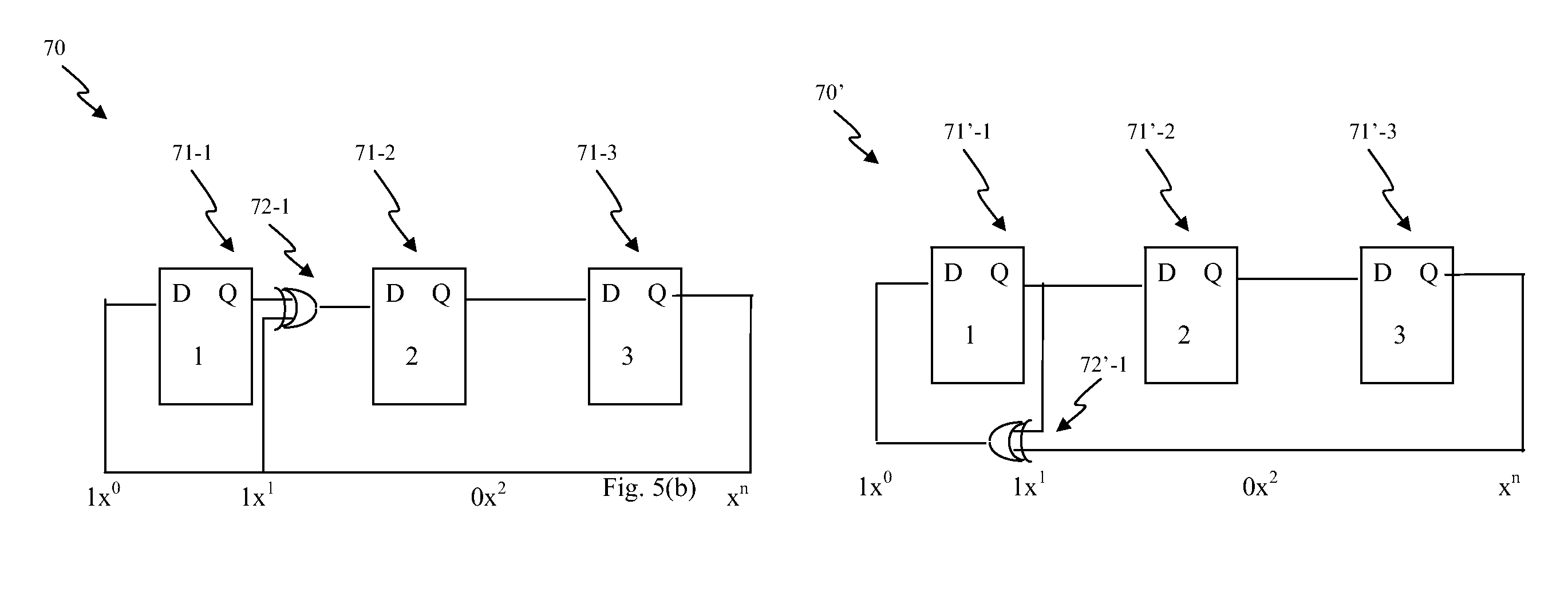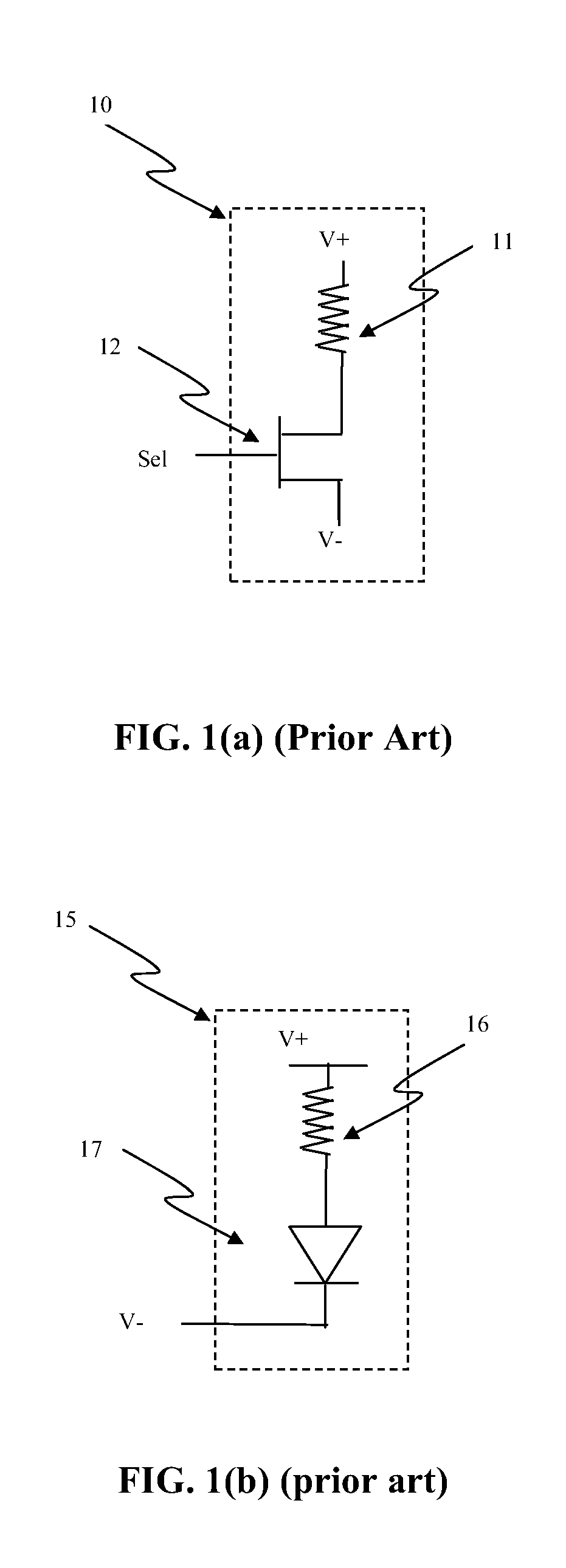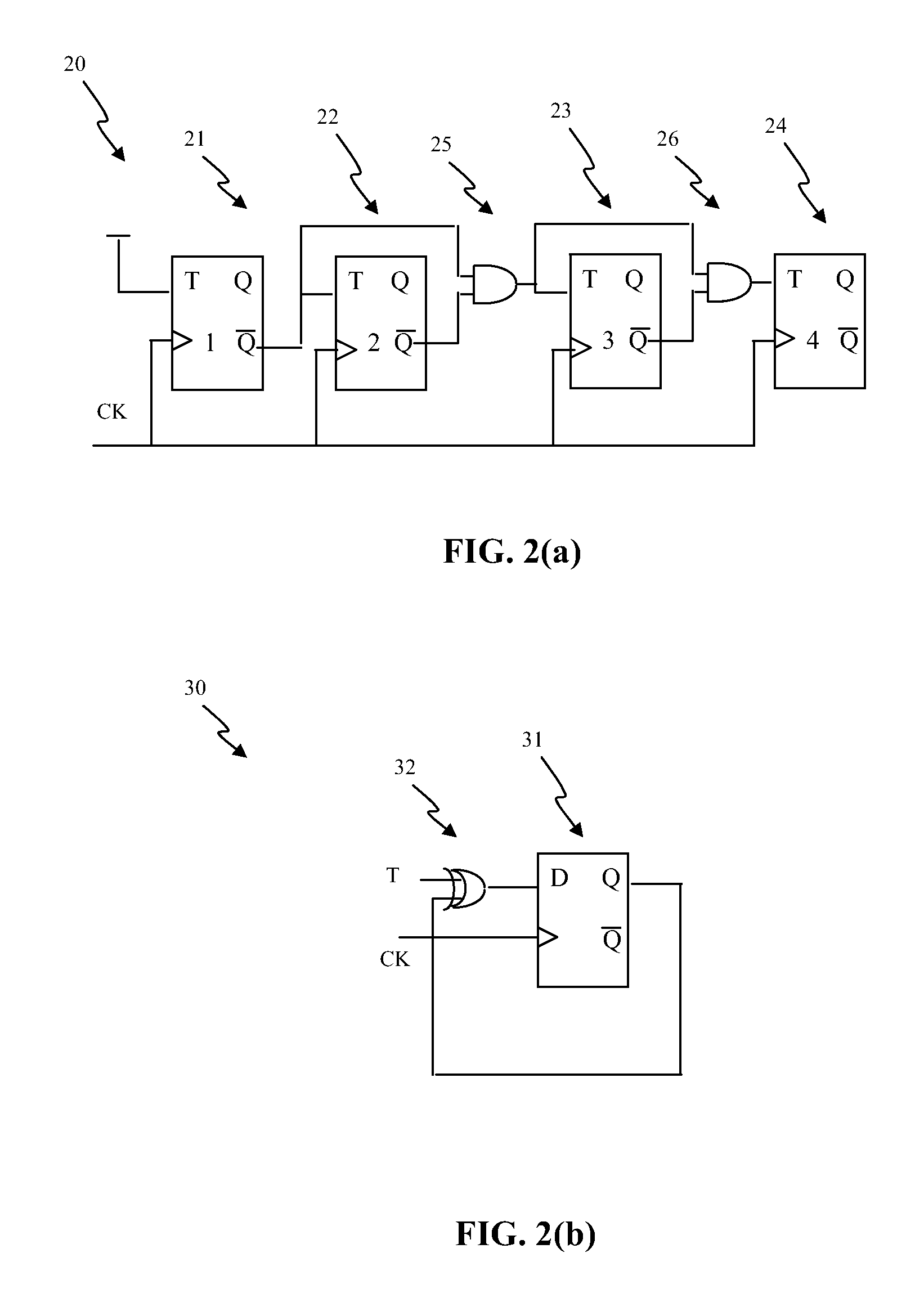Circuit and system of a low density one-time programmable memory
a one-time programmable memory and circuit technology, applied in the field of circuits and systems of low density one-time programmable memory, can solve the problems of ineffective counter and flip-flop according to the conventional design, large cell size of electrical fuse using silicided polysilicon, etc., to reduce otp memory size, low density otps, and save cost
- Summary
- Abstract
- Description
- Claims
- Application Information
AI Technical Summary
Benefits of technology
Problems solved by technology
Method used
Image
Examples
Embodiment Construction
[0035]Embodiments disclosed herein use innovations to reduce gate counts for a low density OTP memory. A counter with high gate count is replaced by a Linear Feedback Shift Register (LFSR) to generate addresses in a serial OTP memory. LFSR can generate almost the entire available address spaces with a proper design, except the all 0s state. The all 0s state can be multiplexed in and out at any time to reach the entire 2n address spaces, the same effect as a counter, except that the addresses are not generated incremented or decremented but in a seemingly pseudo-random manner. Either counter or LFSR can be designed based on D-type flip-flops (DFFs). The conventional design for DFFs is based on pass gates to drive a pair of cross-coupled inverters that needs about 24 transistors (24T). A better DFF can be designed with two latches. Each latch has a pair of cross-coupled inverters as two outputs coupled to drains of a pair of NMOS input devices. The gates of the NMOS input devices are ...
PUM
 Login to View More
Login to View More Abstract
Description
Claims
Application Information
 Login to View More
Login to View More - R&D
- Intellectual Property
- Life Sciences
- Materials
- Tech Scout
- Unparalleled Data Quality
- Higher Quality Content
- 60% Fewer Hallucinations
Browse by: Latest US Patents, China's latest patents, Technical Efficacy Thesaurus, Application Domain, Technology Topic, Popular Technical Reports.
© 2025 PatSnap. All rights reserved.Legal|Privacy policy|Modern Slavery Act Transparency Statement|Sitemap|About US| Contact US: help@patsnap.com



